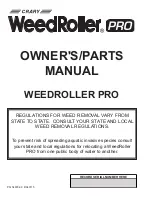
99
Insert effect parameter functions
Section 2
Limiter
A limiter is an effect that prevents distortion by suppressing
input signals in excess of a specific value (i.e., the threshold).
Effect On/Off
OFF, ON
This parameter turns the limiter effect on or off.
■
When “COSM OD GUITAR AMP”
algorithm is selected
Threshold
0–100
Adjust this parameter to match the input signal. Limiting will be
applied to input levels in excess of this level.
Release
0–100
This adjusts the time it takes for limiting to be removed once the
signal level drops below the threshold.
Tone
-50–+50
Adjusts the tone.
Level
0–100
Adjusts the overall volume of the effect.
■
When algorithm other than “COSM OD
GUITAR AMP” is selected
Threshold
-60–0 dB
Adjust this parameter to match the input signal. Limiting will be
applied to input levels in excess of this level.
Attack
0–100
Adjusts the time it takes for the effect to become active once the
input level exceeds the threshold level.
Release
0–100
This adjusts the time it takes for limiting to be removed once the
signal level drops below the threshold.
Detect HPF
THRU, 20–2000 Hz
Adjusts the cutoff frequency for level detection. When “Thru” is
selected, this will operate as a conventional limiter.
Level
-60–+24 dB
Adjusts the overall volume of the effect.
Low Cut Filter
This filter is used to eliminate unwanted low-band sounds such as
microphone pop noises.
Effect On/Off
OFF, ON
Turns the low cat filter on and off.
Invert
OFF, ON
This parameter switches the microphone phase between OFF (phase
same as input) and ON (phase is opposite of input).
Freq
40–800 Hz
This parameter adjusts the cutoff frequency of the low-cut filter.
Lo-Fi Box
This effect is used to produce a lo-fi sound.
Effect On/Off
OFF, ON
This parameter turns the lo-fi box effect on or off.
Effect Type
Select the operating mode for the lo-fi box.
RADIO:
The audio will sound as if it is being played on an AM radio.
By adjusting “Tuning,” you can simulate the transient sounds that
would occur as you adjust the radio’s tuning frequency.
PLAYER:
The audio will sound as if it is being played on a gramophone. Needle
noise caused by scratches and dust on the record is also simulated.
DIGITAL:
This setting allows you to create a lo-fi sound by lowering the sample
rate and/or decreasing the number of bits. A bank of series-connected
real-time modify filters allow the sound to be freely reshaped.
■
When “RADIO” or “PLAYER” is selected
Tuning
0–100
This parameter is used with the RADIO setting. It simulates the transient
sounds that would occur as you adjust the AM radio’s tuning frequency
Wow Flutter
0–100
This parameter is used with the PLAYER setting. It simulates the wow
and flutter that occur when the speed of the turntable is not constant.
Noise
0–100
This parameter is used to simulate noise.
Filter
0–100
This parameter adjusts the filter.
D:E Balance
100:0–0:100
This adjusts the balance of the direct and effect volumes.
■
When “DIGITAL” is selected
Pre Filter
OFF, ON
This filter reduces the amount of digital distortion. When turned off, it
allows you to create an intense lo-fi sound that includes digital distortion.
Sample Rate
OFF, 1/2–1/32
This parameter allows you to modify the sampling rate.
Bit
OFF, 15–1
Modifies the number of data bits. When turned off, the number of
data bits will remain unchanged.
If an extremely low number of bits is selected, certain input sources
may result in loud noises being input, even when there is no input
sound. In such a case, raise the noise suppressor’s threshold.
Post Filter
OFF, ON
This filter reduces the amount of digital distortion produced by the
lo-fi. By turning this off, you can create an extremely lo-fi sound.
BR-1600_R_e.book 99 ページ 2007年12月6日 木曜日 午前9時52分
Summary of Contents for Digital Recording Studio BR-1600 CD
Page 41: ...41 Section 1 Advanced Use Section 1 Advanced Use BR 1600_R_e book 41...
Page 73: ...73 Section 2 Using Effects Section 2 Using Effects BR 1600_R_e book 73...
Page 145: ...145 Section 3 Using Rhythm Section 3 Using Rhythm BR 1600_R_e book 145...
Page 203: ...203 Section 4 Using the CD R RW Drive Section 4 Using the CD R RW Drive BR 1600_R_e book 203...
Page 220: ...220 MEMO BR 1600_R_e book 220...
Page 221: ...221 Section 5 Using MIDI Section 5 Using MIDI BR 1600_R_e book 221...
Page 239: ...239 Section 6 Using USB Section 6 Using USB BR 1600_R_e book 239...
Page 272: ...272 MEMO BR 1600_R_e book 272...
Page 273: ...273 Appendices Appendices BR 1600_R_e book 273...
Page 309: ...309 MEMO BR 1600_R_e book 309...
















































